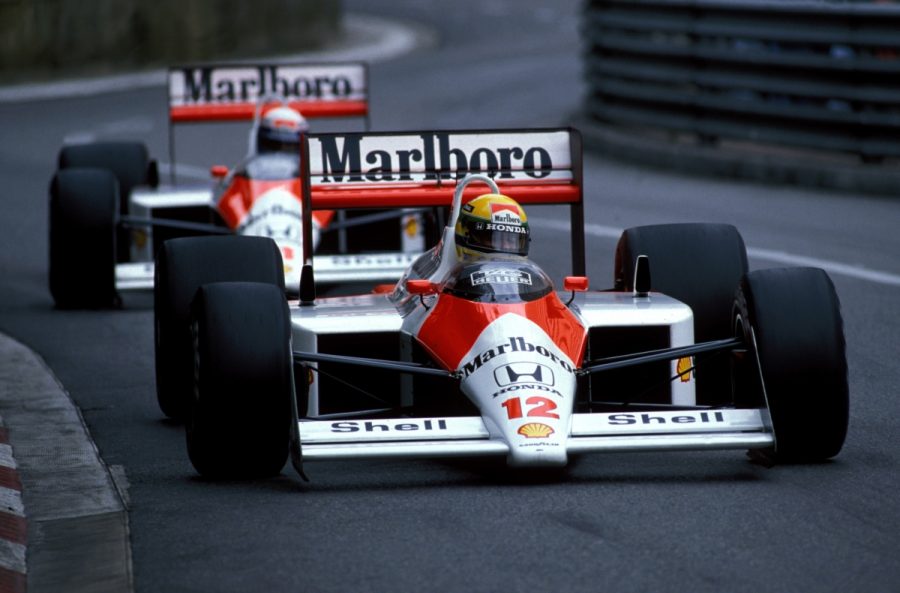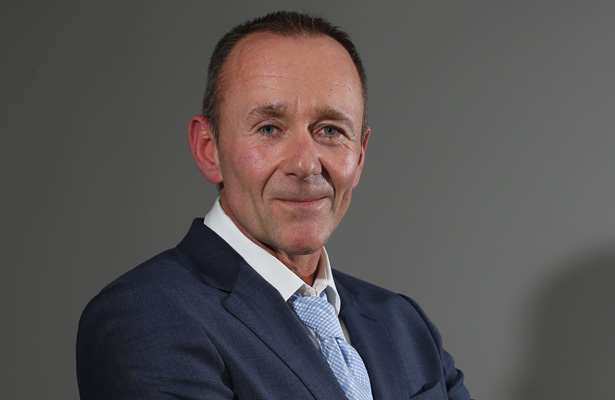A COMPLETE PACKAGE
Featuring a battery and energy recovery systems (ERS) with high cooling demands, current power units must be designed with chassis constraints in mind, which calls for making compromises.
“You sit down with the people who are pulling together the whole car,” Cowell continued. “Then it is really a case of balancing out what is required for the overall fastest race car. If the lap time says it's better to have a part sized at half its optimum, then that's what you do.”
By the time he graduated from Lancaster University with a degree in Mechanical Engineering, Cowell had already been a racing enthusiast for many years.
“My father used to race cars when he was a student at university. And then, when I was around three and my sister five, my dad started to build his own racing cars again to go racing again, to do sprint and hill climbs. That was what he started off with, and then he moved on to do circuit racing again.
“So from the age of three, the garage at home had racing cars being created and put on the trailer, and brought by the family car to the races. That’s what we did at the weekend. I grew up with that. It was a lot of fun; it was a great way of having a fun activity to do for a schoolboy.
“Friends were coming along as well, and it also pulled the whole family together – uncles and so on come along and watch as well so it was often a family event. Then, when I was 17, I got my own race licence, and we shared the same cars in sprints and hill climbs. Somehow education fitted in around that…
“The first time I beat my father – because in sprint and hill climbs you have exactly the same cars, all you do is just swap the number – was a happy day for me, and an unhappy day for him! So I grew up with it all around and that’s what it did to me. [Laughs].”
After a 12-year tenure at Cosworth (temporarily interrupted by a short stint at BMW), Cowell moved to what was still called Mercedes-Ilmor in 2004 to work on the V10 and then V8 engines that powered the McLaren F1 cars.
The partnership between Brixworth and Brackley – both factories are located less than 30 miles away from each other – began four years later when Mercedes agreed to supply Brawn Grand Prix, which would become the German manufacturer’s works outfit the following season.
The relationship between the two departments has grown closer over the years, fostering open discussions among engineers without fear of sharing industrial secrets. In a way, Mercedes’ bold split turbo design is a symbol of this seamless cooperation, as the solution meets both the chassis and engine demands.
“A lot of it is packaging,” Cowell added. “The turbocharger is buried in amongst the internal combustion engine and all the bits are positioned exactly where the engine would like them to be positioned and exactly where the car would like them to be positioned.
“There are also benefits for the airflow on the compressor side, and the exhaust stream as well, on the hot side, and [also] in terms of looking at the engine systems.”
CUMULATIVE BENEFITS
To put it in simple terms, the split-turbo architecture, which was apparently devised following an enquiry from the chassis engineers at Brackley, has three main advantages.
First, it allows for better cooling, since the aluminium compressor and pipework are placed at the front of the unit, i.e. away from the 1000˚C turbine and red-hot exhaust. With the compressed air needing less cooling, the PU106 power units can therefore accommodate a smaller intercooler.
Secondly, the pipework that connects the compressor to the intercooler is much shorter than on more conventional engine layouts, which helps curb the infamous turbo lag. Thus, a lesser portion of the energy recovered by the MGU-H is needed to feed the turbine when the throttle is not engaged. In charging its battery faster, the Mercedes unit can deploy the maximum amount of electric energy allowed per lap, using less fuel as a result.
Finally, the split-turbo design has enabled Mercedes to lodge a single intercooler within the monocoque itself, basically between the engine and driver. Such installation frees up valuable space in the sidepods, which in turn limits airflow resistance.
“If you can build everything in the factory environment, build it up; test it exactly as it is going to run at the race circuit, you stand a good chance of doing a better quality job,” Cowell continued.
“If you send the collection of parts to the circuit and then build it up in the circuit environment, they won’t be as high quality, because the environment is a garage instead of a factory where you can have clean rooms, and you can do more pass-off testing at the factory.
“That is one of the benefits as well of [the fact that] our turbocharger really is an integral part of the engine, it is not a separate, added-on part which it often is on racing engines. It is optimised for racing interest.”








